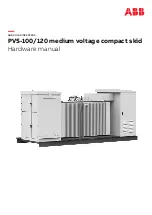
7
Section 2 – Installation
Standby Generator Set
1.9 STARTING
AIDS
This standby generator is equipped with the follow-
ing starting aids that serve to provide quicker, easier
starts under varying climactic conditions.
This generator has been mounted with an engine
coolant heater and a battery charger. These aids are
powered by a normal (UTILITY) power source during
nonoperating periods.
1.9.1 ENGINE COOLANT HEATERS
This unit is equipped with an engine coolant (block)
heater (Figure 1.2). It is powered by a circuit nor-
mally fed by the utility power supply. The heater acts
to heat the engine coolant when the unit is not operat-
ing. This action keeps the engine warm even in cold
weather, helping to ensure quicker starts. Heated
coolant in the engine rises continuously drawing cold
coolant into the heater, making certain of a constant
flow of warm coolant through the engine.
Figure 1.2 – Typical Engine Coolant Heater
1.9.2 BATTERY
CHARGERS
All units are fitted with a 24 VDC, 10 amp charger.
2.1
STANDBY GENERATOR
INSTALLATION
DANGER
Connecting this generator to an electrical system
normally supplied by an electric utility shall be
by means of a transfer switch (such as the “GTS”
type transfer switch), so as to isolate the electric
system from the utility distribution system when
the generator is operating. Failure to isolate
the electric system by these means will result in
damage to the generator and may also result in
injury or death to utility workers due to back-
feed of electrical energy.
If an open bottom is used, the engine-generator
is to be installed over non-combustible materi-
als and should be located such that combustible
materials are not capable of accumulating under
the generator set.
Only qualified, competent installation contractors
or electricians thoroughly familiar with applicable
codes, standards and regulations should install this
standby electric power system. The installation must
comply strictly with all codes, standards and regula-
tions pertaining to the installation.
This genset must be installed on a level surface. The
base frame must be level within 1/2 inch all around.
After the system has been installed, do nothing
that might render the installation in noncompli-
ance with such codes, standards and regulations.
NOTE:
For more information about the installation of a
standby system, order
Engine-Generator Standby
Electric Power Systems Installer’s Guide and
Reference Manual (part #046622
) from an
Authorized Service Dealer.
2.1.1 NFPA
STANDARDS
The following published standards booklets pertain-
ing to standby electric systems are available form
the National Fire Protection Association (NFPA),
Batterymarch Park, Quincy, MA 02269:
•
NFPA No. 37, STATIONARY COMBUSTION
ENGINES AND GAS TURBINES.
•
NFPA No. 76A, ESSENTIAL ELECTRICAL
SYSTEMS FOR HEALTH CARE FACILITIES.
• NFPA No. 220, STANDARD TYPES OF BUILDING
CONSTRUCTION
• NFPA No. 68, GUIDE FOR EXPLOSION VENTING
• NFPA No. 70, NATIONAL ELECTRICAL CODE.
• NFPA No. 30, FLAMMABLE AND COMBUSTIBLE
LIQUIDS CODE.
• NFPA No. 10, INSTALLATION, MAINTENANCE AND
USE OF PORTABLE FIRE EXTINGUISHERS.
OUTPUT









































